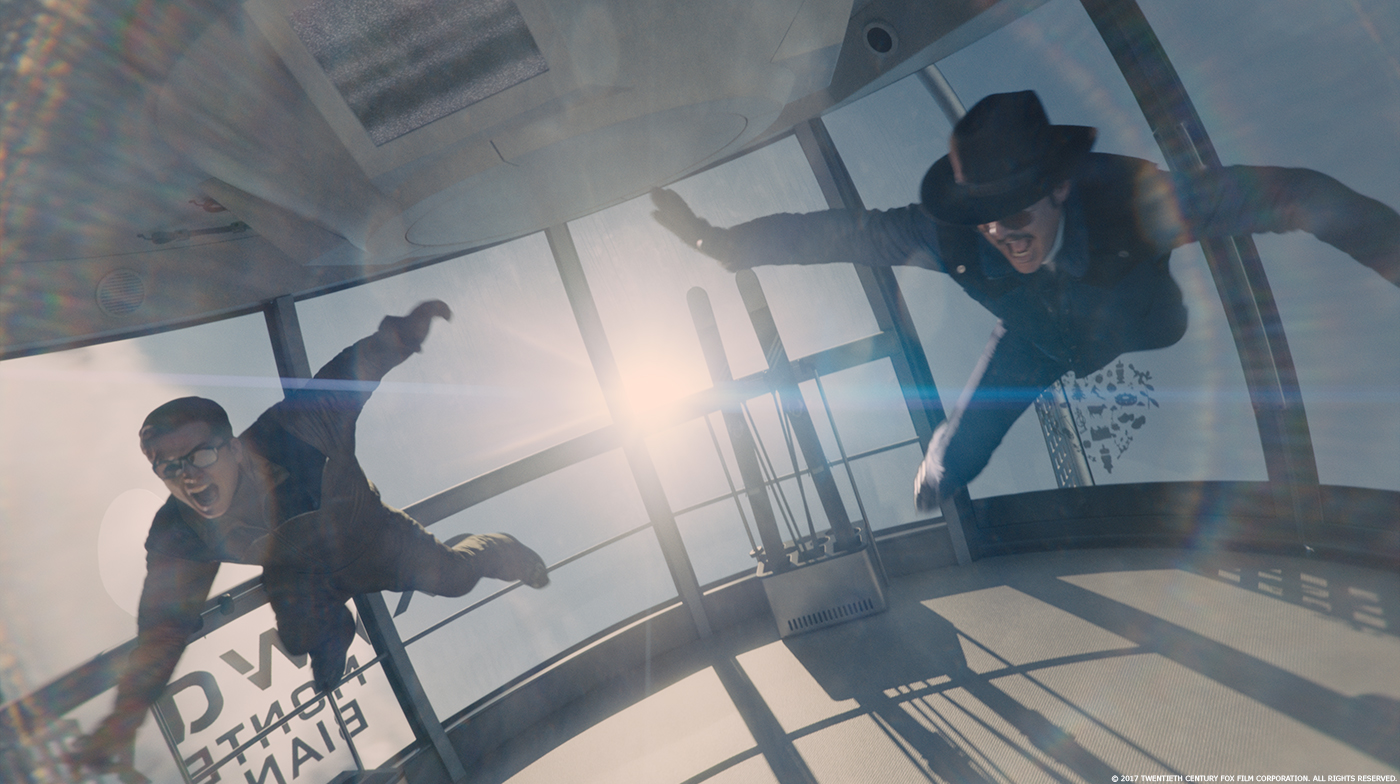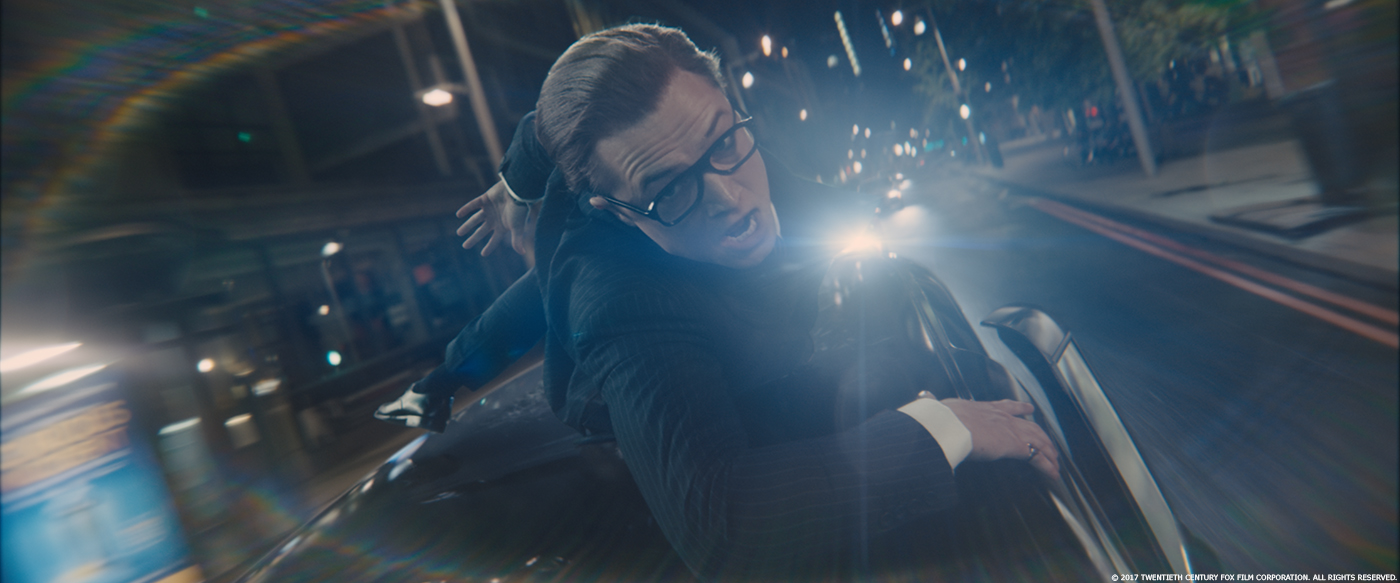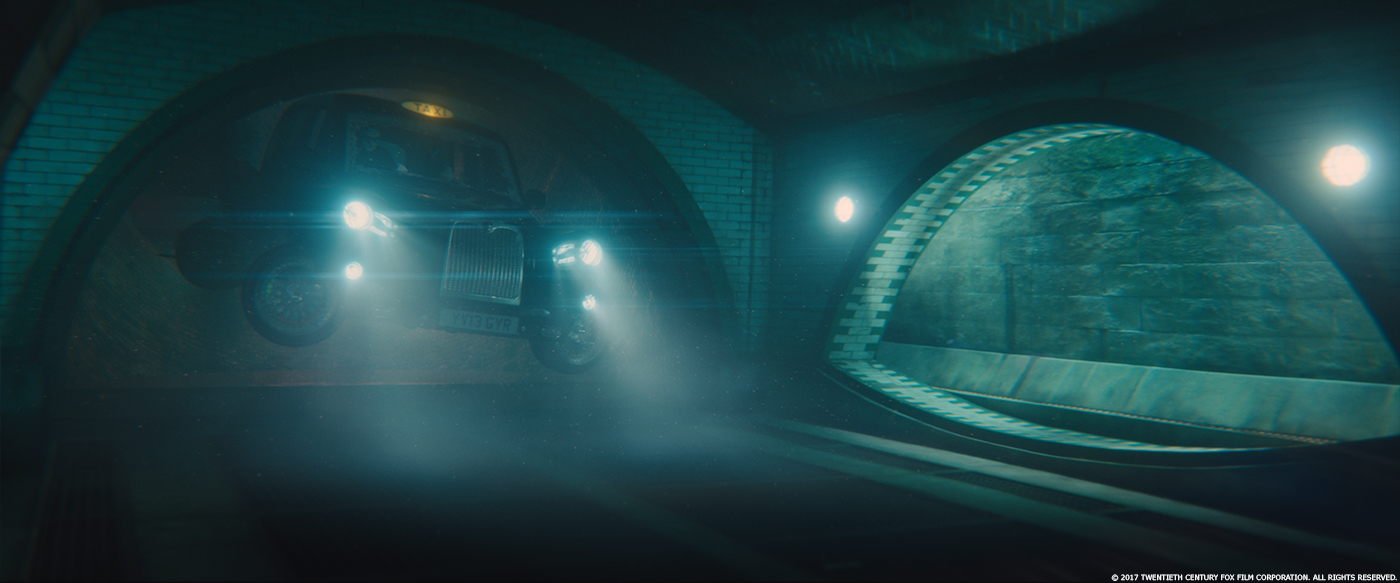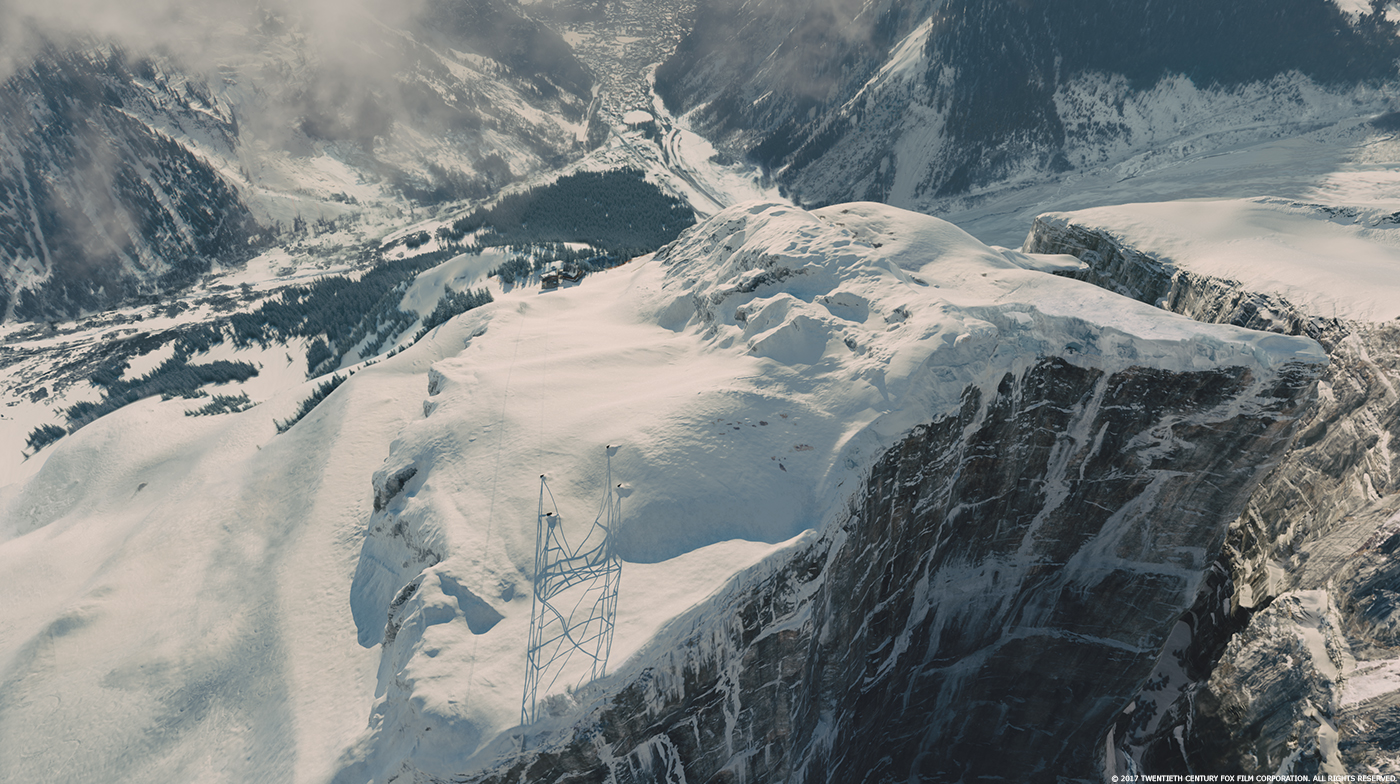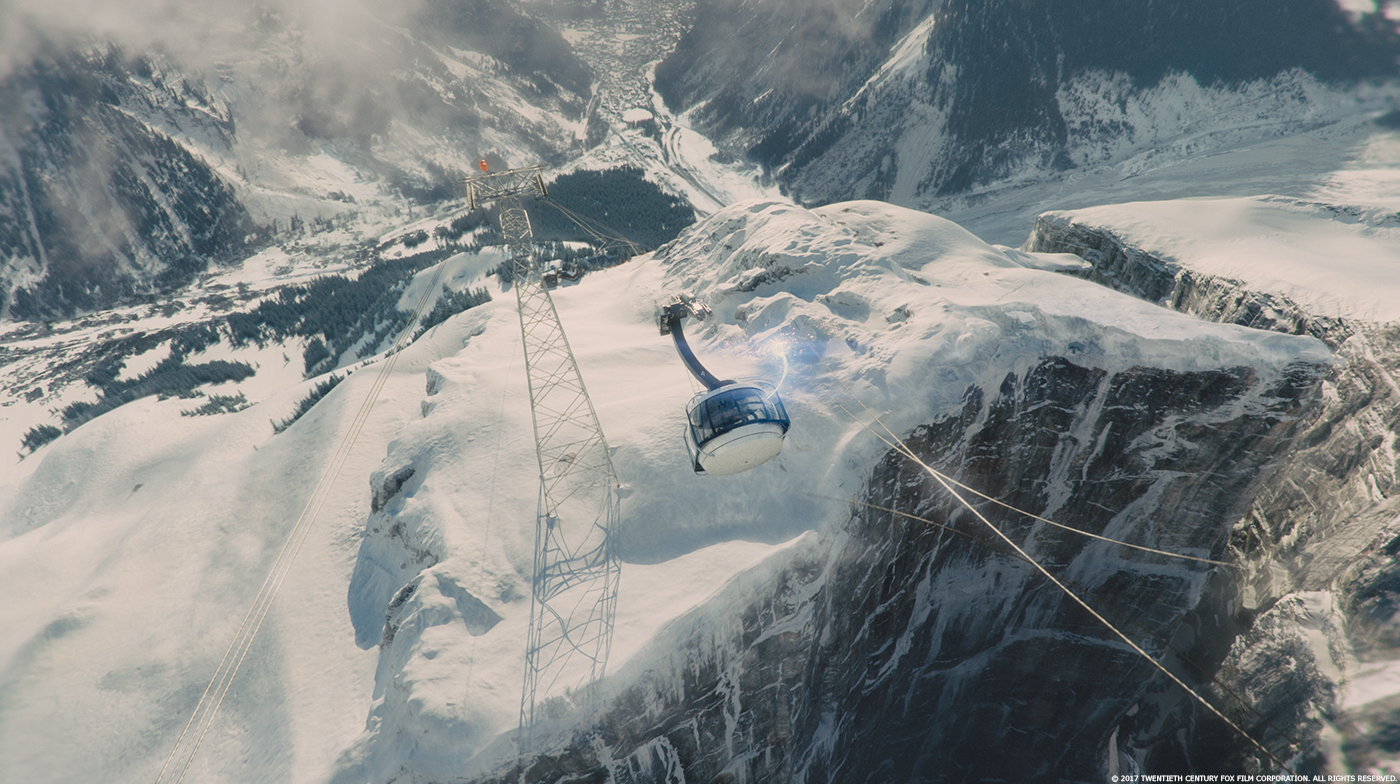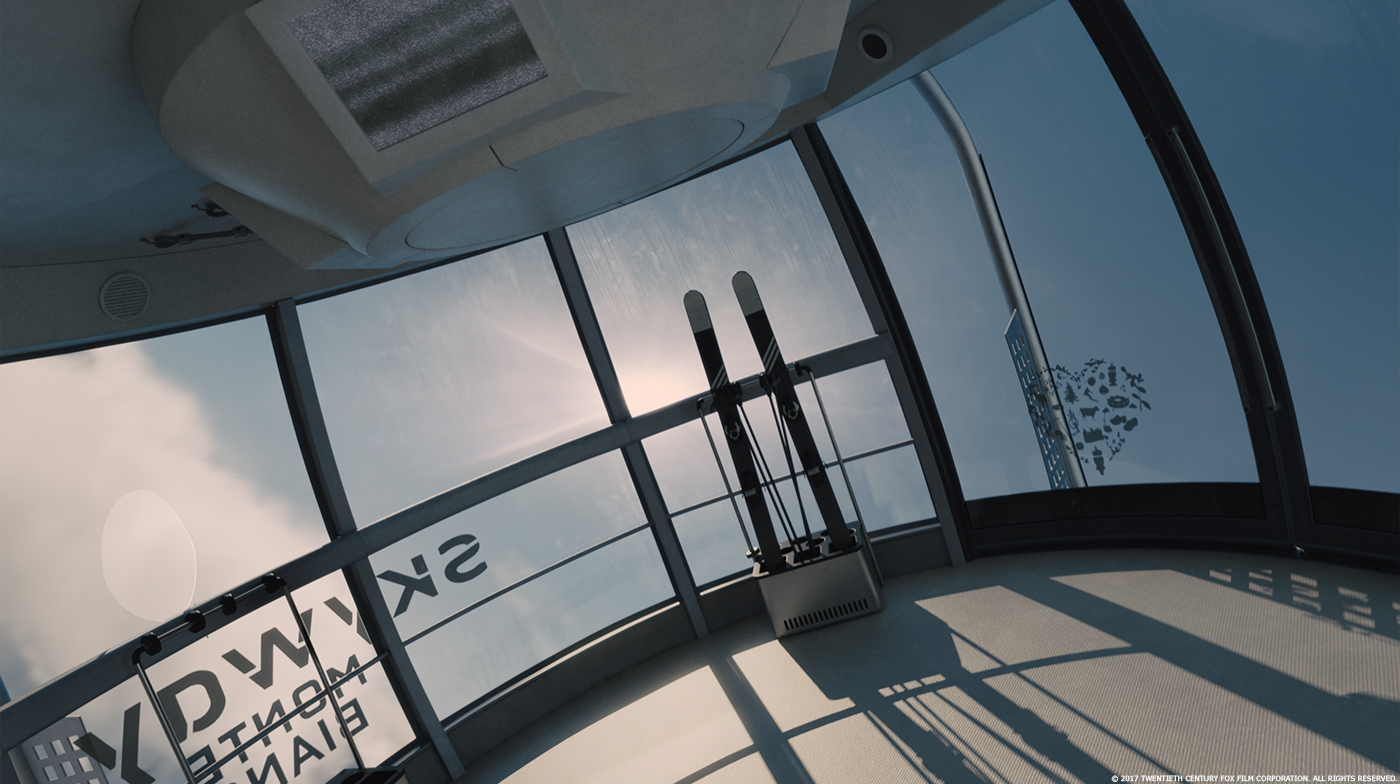Fabio Zangla has more than 10 years experience in visual effects. He worked in numerous studios like MPC, Double Negative and Weta Digital before joining Framestore in 2016. His filmography includes projects such as AVATAR, HUGO, JOHN CARTER or INTERSTELLAR.
Chris Zeh began his career in VFX in 2000. He worked at Cinesite, Rainmaker UK, Weta Digital and Framestore. His filmography is composed of many projects such as THE LORD OF THE RINGS: THE RETURN OF THE KING, THE GOLDEN COMPASS, THE DARK KNIGHT, GRAVITY or GUARDIANS OF THE GALAXY.
How was the collaboration with director Matthew Vaughn and VFX Supervisor Angus Bickerton?
We were lucky to have a close and collaborative relationship with Angus Bickerton. The production team was based close to our office in London, at Goldcrest. Angus would visit us twice a week so that we could run reviews, which was great for us.
What are the sequences made by Framestore?
We worked across 438 shots at Framestore, across 16 different sequences. We covered work across the Alpine building shootout, with full environment builds, the full CG underwater taxi sequence and a number of other diverse scenes; including the taxi chase you can see in the trailer. Every shot was a different piece, problem and solution which forced us to look at it with new eyes; but this of course, made it a great show to work on.
The movie opens with an intense car chase through London. How did you approach it?
The opening sequence taxi chase was a fun scene to be involved in. Three Jaguars are chasing Eggsy’s (Taron Egerton) black cab in a scene full-on action scene. Stunt supervisor and second unit director Brad Allen was tasked with working through the action beats. He’s an amazing guy who trained under Jackie Chan, he had a great approach to storytelling through stunts. He would do twenty takes of a stunt, and if it didn’t capture the story beat that he needed, he’d do twenty more until he got it right.
How was filmed this sequence especially on the most famous place of London?
An Array rig setup was mounted on the taxi, which we stitched together to create a 360° background which we could then repurpose as a backplate for shots. We had seams between the cameras, and perspective-wise there were issues.These included car tyres not sticking to the road, or the car looking too small in shots. We also had to ingest this into our pipeline, which was a challenge. We were then tasked with two major CG environments builds: Waterloo Place and Hyde Park Corner, lit for a nighttime chase scene. Whole London streets were painstakingly recreated in CG for the sequences, based on photogrammetry and a LIDAR survey of the environments during the day.
The car chase then moves underwater. Can you explain in details about this part?
There was then the underwater swan station sequence, where Eggsy drives the cab into Serpentine Lake in Hyde Park. This was a lot of fun for us to do as everything was CG: the taxi and the underwater environment. In the last shot of the sequence, the taxi enters the secret Kingsman base, with our team transforming the taxi back into a normal-looking cab. Taron Egerton was in the taxi as the water drained out, in what was quite a dangerous stunt. As the water level lowered in the live-action, we composited that with the CG taxi. And then as the water drained away, that wiped through to a live-action taxi – and Taron had to hold his breath until all the water drained out. It was quite nerve-wracking!
The action moves to the Alps. Can you explain in details about the creation of this huge environment?
Plate material was shot in Courmayeur, but there was a distinct lack of snow, which had to be rectified using matte painting. The background itself also had to be modified, which meant that up to 95% of the environment ended up being recreated in CG. Mixing real mountains with CG mountains was tricky. The photography of the mountains was pristine, mega clear and full of detail that we had to recreate seamlessly.
Can you tell us more about the cable car that spins extremely with Eggsy and Whiskey inside?
The cable car spins slowly to afford passengers a 360-degree view of the mountainside, before it speeds up, out of control. When it came to the action, the camera angles were plotted and then taken through to pre-vis to further dramatise the sequence. In a few shots, we played the cable car action a bit more violently than we’d been able to do on set. We had a very short period of time in which to do it, and we were all worried about it, but it just worked – I think because the lighting had been planned, and the previs didn’t get re-edited.
This sequence is full of FX. Can you explain in details about it?
This was a FX-heavy sequence. There was snow spray, cable car destruction and a lot of rendering volumetric snow which can be a challenge – to get the look of it right, in its translucency and plausibility.
What was the main challenge on this show and how did you achieve it?
The challenge stemmed from each sequence being very different. Every time we started working on a new sequence of shots, we’d have to start from scratch. It was an eclectic piece of work but that’s what made it fun.
What’s the VFX shots count?
438 shots
A big thanks for your time.
// WANT TO KNOW MORE?
Framestore: Dedicated page about KINGSMAN – THE GOLDEN CIRCLE on Framestore website.
© Vincent Frei – The Art of VFX – 2017


